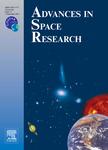版权所有:内蒙古大学图书馆 技术提供:维普资讯• 智图
内蒙古自治区呼和浩特市赛罕区大学西街235号 邮编: 010021

作者机构:Moscow MV Lomonosov State Univ Moscow Russia Moscow Inst Phys & Technol Dolgoprudnyi Moscow Reg Russia Russian Acad Sci Inst Numer Math Moscow Russia Tver State Univ Tver 170013 Russia
出 版 物:《ADVANCES IN SPACE RESEARCH》 (空间研究进展)
年 卷 期:2015年第55卷第11期
页 面:2657-2667页
核心收录:
学科分类:08[工学] 0708[理学-地球物理学] 0706[理学-大气科学] 0704[理学-天文学] 0825[工学-航空宇航科学与技术]
基 金:Federal Target Program "Research and Developments of Priority Directions in Science and Technology Complex of Russia" [14.575.21.0028, RFMEFI57514X0028] Russian Fund for Basic Research [13-01-00185, 14-05-00598, 14-07-00141]
主 题:Optical remote sensing Pattern recognition Forest classes of different species and ages
摘 要:Pattern recognition problem is outlined in the context of textural and spectral analysis of remote sensing imagery processing. Main attention is paid to Bayesian classifier that can be used to realize the processing procedures based on parallel machine-learning algorithms and high-productive computers. We consider the maximum of the posterior probability principle and the formalism of Markov random fields for the neighborhood description of the pixels for the related classes of objects with the emphasis on forests of different species and ages. The energy category of the selected classes serves to account for the likelihood measure between the registered radiances and the theoretical distribution functions approximating remotely sensed data. Optimization procedures are undertaken to solve the pattern recognition problem of the texture description for the forest classes together with finding thin nuances of their spectral distribution in the feature space. As a result, possible redundancy of the channels for imaging spectrometer due to their correlations is removed. Difficulties are revealed due to different sampling data while separating pixels, which characterize the sunlit tops, shaded space and intermediate cases of the Sun illumination conditions on the hyperspectral images. Such separation of pixels for the forest classes is maintained to enhance the recognition accuracy, but learning ensembles of data need to be agreed for these categories of pixels. We present some results of the Bayesian classifier applicability for recognizing airborne hyperspectral images using the relevant improvements in separating such pixels for the forest classes on a test area of the 4 x 10 km size encompassed by 13 airborne tracks, each forming the images by 500 pixels across the track and from 10,000 to 14,000 pixels along the track. The spatial resolution of each image is near to 1 m from the altitude near to 2 km above the ground level. The results of the hyperspectral imagery pr